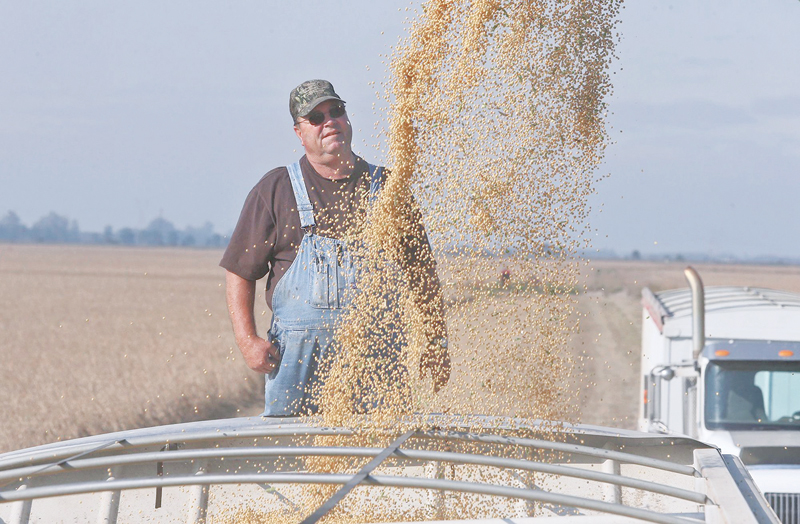

Since the mid-2000s, North Dakota farmer Paul Thomas has planted more of his land with soybeans as China’s demand for the oilseed grew. The shift culminated this year when Thomas planted 1,600 of his 5,000 acres with soybeans, the most ever.
But Thomas and many farmers like him plan to return to the old US farm belt staples in 2019: corn and wheat. The change will reverse a trend that saw US farmers plant more acreage this year with soybeans than corn for the first time in 35 years.
The expected shift to other grains comes as farmers struggle to sell the soybean crop because of President Donald Trump’s trade war with China. China typically buys 60 per cent of US soybean exports but has bought almost none for months due to the trade war, pushing prices to a decade low.
Thomas plans to plant more wheat next year, hoping he can earn more by decreasing his reliance on the crop dependent on Chinese demand.
Soybean prices are “kicking our butts,” said Thomas. Without China, Thomas said local cash prices near his farm are $7.10 per bushel of soybeans, below the $8.50 necessary to cover costs.
The trade war has hit US farmers at a vulnerable time. They had planted more acreage than ever with soybeans this year and are harvesting the largest ever US crop.
But Beijing slapped an import tax on US soybeans in July in retaliation for Trump’s taxes on Chinese imports into the United States.
The US Department of Agriculture, in the agency’s first estimate for next year’s planting to include the impact of the tariffs, on Friday estimated 2019 corn plantings to rise about 3 million acres to 92.0 million acres. Wheat acres would rise to 51.0 million acres, up from 47.8 million this year, while soybean acres would fall to 82.5 million acres.
Acreage of soybeans, planted before retaliatory tariffs were imposed, rose to 89.145 million this year, up about 15 million acres from a decade ago. Corn acres are up by less than 5 million acres since 2008 to 89.1 million acres while wheat acres of 47.8 million this year were near the lowest in a century.
Aron Carlson, president of the Illinois Corn Growers Association, devoted nearly half of his 3,600 acres to soybeans this year but plans to cut back.
He said he may increase corn planting by up to 20 per cent at his farm in northern Illinois. The state is the biggest US soy producer.
Soybeans yield fewer bushels per acre than corn but also require less fertilizer, making them generally cheaper to grow.
A switch to corn could raise costs for farmers but benefit some companies including fertilizer sellers like The Andersons Inc. The firm’s Chief Executive Pat Bowe said he expected a switch to corn would be good for fertilizer use. — Reuters
Oman Observer is now on the WhatsApp channel. Click here



